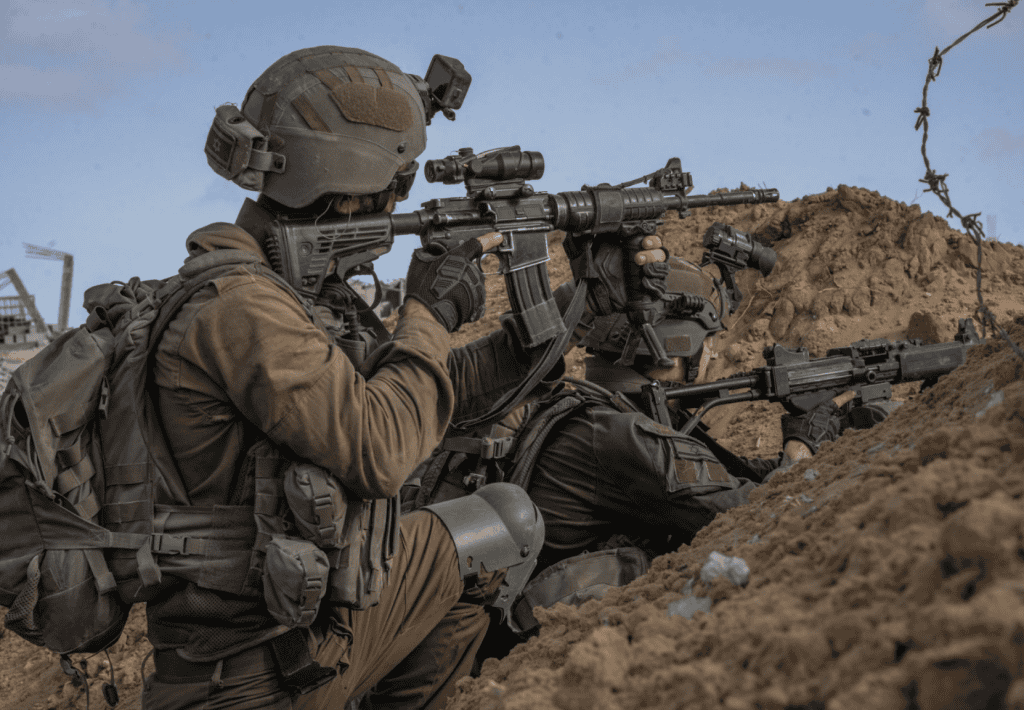
Hamas terrorists in Gaza launched rockets targeting Kerem Shalom in southern Israel near the Egyptian border on May 5. In addition, Hezbollah launched dozens of rockets at the northern Israeli city of Kiryat Shmona and targeted other communities along the border. The barrages of rocket fire illustrated that Hamas can still plan and carry out targeted attacks on sensitive areas and that Hezbollah is seeking to increase its rocket fire.
The attacks on two fronts came as Israel was preparing for Holocaust Remembrance Day, which began at sundown on May 5 in Israel. Typically on this day, most businesses are closed in the evening and a quiet descends on the country. This year, the day comes almost seven months since the October 7 attack in Israel. It also serves as a curtain-raiser for a series of upcoming annual national days, including the memorial day for fallen soldiers and Israeli Independence Day on April 13.
On May 5, Israel Defense Minister Yoav Gallant journeyed to the Gaza Strip where he met with soldiers in the Netzarim corridor, the only major area that Israel continues to control in Gaza. Photos showed him standing near the water in an area that is likely near the temporary pier Israel has built and where the IDF is clearing a section of land dozens of acres in extent that will be able to handle cargo offloaded from a US-built floating pier off the coast.
Israel’s leadership, including Gallant, continue to vow that Israel will launch an operation into the southern Gaza city of Rafah on the Egyptian border. However, the US and other countries have expressed concern about the humanitarian situation, should Israel proceed. This puts pressure on Israel to come up with a plan that enables civilians to leave Rafah.
This focus on Rafah increased on May 5 due to the rocket fire which came from an area near civilian shelters in Rafah. The IDF said that 10 projectiles were fired from “the area adjacent to the Rafah Crossing toward the area of Kerem Shalom. Shortly after, IAF fighter jets struck the launcher from which the projectiles were fired. In addition, IAF fighter jets struck a military structure located in the area of the launcher.” The IDF accused Hamas of using Gazans as human shields by launching rockets from near a civilian area.
At the same time, the IDF continued operations in Gaza. On Saturday, May 4, Israeli warplanes killed Aiman Zaarab, a Palestinian Islamic Jihad member. The IDF accused him of being involved in the attack on the Israeli community and IDF post of Sufa near the border. The report also said he was linked to continuing terrorist activity in Gaza. On May 5, the IDF carried out more airstrikes in Bureij in central Gaza. According to an IDF statement, several Hamas Nukhba terrorists who had taken part in the October 7 attacks were killed. A Hamas deputy company commander was also targeted in Jabalya, a built-up area east of Gaza city.
Hamas put out several statements on May 4 and 5 discussing its latest tactics in Gaza. It said on May 4 that a number of groups in Gaza were focusing attacks on the Neztarim corridor. On May 5, it also took credit for the attack on Kerem Shalom. It claimed to use 114mm rockets in the attack, a type of rocket it dubbed the “Rajum.” It was not clear why Hamas has been emphasizing the use of this type of rocket, but it has been mentioned by the group several times in the last weeks. Hamas posted a video showing the rockets in a multi-launch system, such that a number can be fired at the same time.
In general in the last two months, Hamas has had difficulty firing more than several rockets a time, in contrast to the large barrages during the early months of the war. The May 5 attack appears to be an exception and illustrate Hamas’ attempt to showcase its continued capabilities. Hamas claimed to have targeted IDF troops and to have intelligence on what units were located in the area it targeted. It also said this was a “quality” target.







